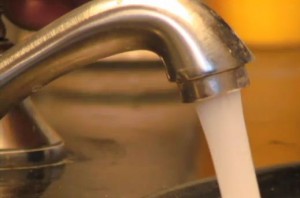Keep Grass Green while Conserving Water
Who doesn't love standing barefoot on cool, green grass during the summer? Sure, standing in a river wetting a line is by far the way to spend your days, but many people enjoy the look and feel of a healthy lawn- especially after a summer's day on the water. Xeriscaping is an awesome trend to conserve water while keeping your home's landscape appealing. But it's a common misconception that having green grass and being an effective steward of our water supply don't go hand in hand. Of course using little or no water on landscapes is the best way, but there are ways to keep your grass green while keeping our rivers and trout healthy.
- Rely on the Mother Nature: Sure, this one is obvious but it should go with saying that grass is more resilient than one may think. Grass lawns can tolerate up to two months in hot, dry conditions and still come back when there is water available. Kentucky bluegrass, a common grass along the Front Range, is very drought resilient. "During hot, dry spells, you can let your lawn naturally turn brown and go dormant... Grass will bounce back when rainfall and cooler temperatures return," according to Scotts.
- Use a rain barrel: Staring last year, it is now legal to use a rain barrel to collect up to 110 gallons of water in Colorado. According to Conservation Colorado, using rain barrels could conserve up to 1,200 gallons of water each year per household. A study by the state of Colorado found that in just Douglas County alone, 97 percent of rain water was lost to evaporation and vegetation. Using these barrels, the rain will be collected in a covered unit to reduce the amount of evaporation. The water collected can be used to water the grass or other vegetation without having to turn on the sprinklers or hose.
 Recycle water: Use the waste water from daily household usage like showering or washing dishes for use on your lawn. Collect the waste water by plugging the drain to then scoop the water with a bucket and water trees, shrubs, or portions of the grass that need more attention- most likely the portions in direct and intense heat. (Bonus Tip: Planting water efficient or native trees can help keep grass shaded and covered from the heat).
Recycle water: Use the waste water from daily household usage like showering or washing dishes for use on your lawn. Collect the waste water by plugging the drain to then scoop the water with a bucket and water trees, shrubs, or portions of the grass that need more attention- most likely the portions in direct and intense heat. (Bonus Tip: Planting water efficient or native trees can help keep grass shaded and covered from the heat).- Mow Smart: When cutting the grass, keep the lawn blade sharp and the setting high. With a taller height- 3 to 4 inches is the recommended setting- the grass will keep the soil shaded and protected from the sun and increase the ability to retain moisture. Instead of throwing away the clippings, spread them around the lawn. If the grass is cut high and the clippings are small, they will break down quicker and return nutrients to the soil as well as offer more shade for the soil. TrueGreen says, "Don't throw away those clippings when you mow. Be sure to spread them around your lawn to give it an extra source of organic nutrients. Mulch also has the same effect of helping the area retain moisture."
- Water at the right time: Running the sprinklers or watering the grass in the morning or at night is ideal as less water is lost due to evaporation from the heat. It is also not necessary to water every day. About one inch of water every week is needed for healthy grass. Switching to water efficient sprinklers and using a timer is a great way to ensure you are not over watering.